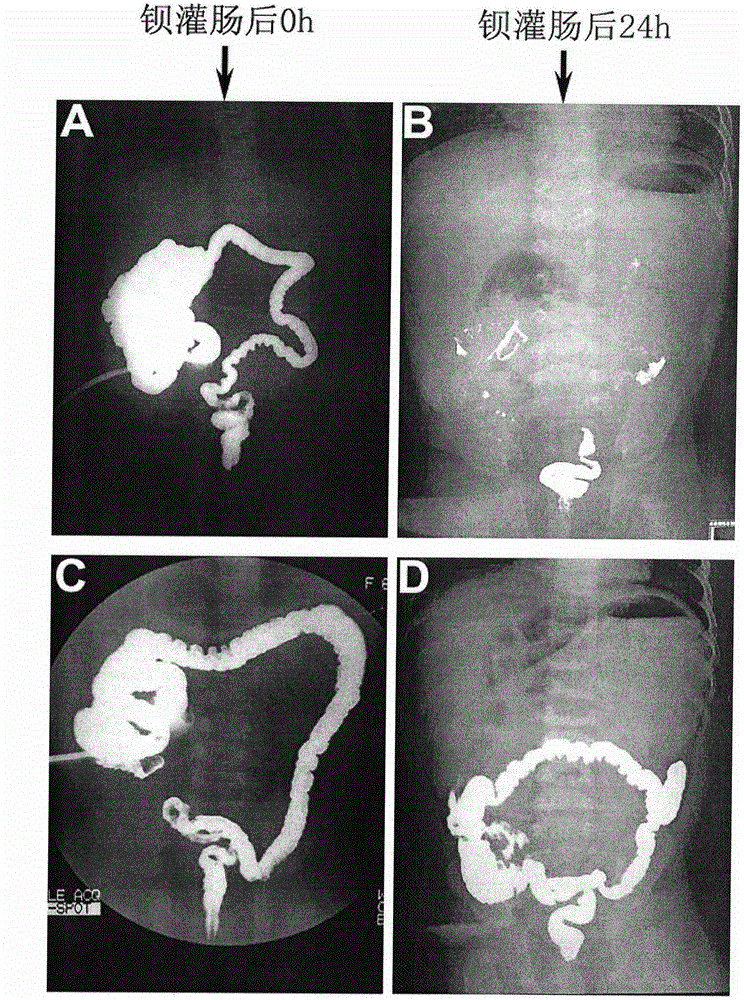Single-nucleotide polymorphism marker relevant to occurrence of congenital megacolon of Chinese population and application of single-nucleotide polymorphism marker
A technology for single nucleotide polymorphism and Hirschsprung's disease, which is applied in the fields of genetic engineering and molecular genetics, can solve problems such as undiscovered SNP markers, avoid invasive auxiliary examination, high repeatability, and simple detection method Effect
- Summary
- Abstract
- Description
- Claims
- Application Information
AI Technical Summary
Problems solved by technology
Method used
Image
Examples
Embodiment 1
[0037] Example 1: Selection and grouping basis of research objects
[0038] From April 2012 to April 2014, the blood of children with Hirschsprung who met the clinical diagnostic criteria of imaging and pathology and normal non-Hsirsprung children who were hospitalized at the same time were collected from the General Surgery Department of Children's Hospital Affiliated to Capital Institute of Pediatrics and intestinal tissue samples (where figure 1 as clinical diagnostic criteria of imaging, figure 2 115 cases each as the test subjects of peripheral blood single nucleotide polymorphisms (in the end, one case in the normal control group was excluded due to sample quality reasons, and the remaining 114 cases), a total of 229 cases of research subjects.
[0039] Specific sample classification criteria are as follows:
[0040] Group A: Hirschsprung group (n=115):
[0041] 1. Age between 0 and 156 months (average 16.1 months), including 82 males, accounting for 71.3% of the tot...
Embodiment 2
[0051] Embodiment 2: research object pathological diagnosis type
[0052] Radiological examination (lower gastrointestinal radiography, 24-hour barium enema), anorectal manometry, rectal manometry, etc. Wall histology biopsy for diagnosis of Hirschsprung disease. The characteristics of radiological examination including 24-hour barium enema are as follows: 1. A "cone"-shaped transitional separation zone can be seen between the lesion segment and the dilated segment; 2. Irregular contraction of the lesion segment; 3. Barium retention; 4. Rectum The spasm does not expand; 5. The intestinal wall is stiff and stiff. Anorectal manometry mainly manifests as the absence of internal anal sphincter relaxation reflex, the rhythmic contraction of anal canal is significantly reduced, and the resting pressure of the rectum and internal sphincter is higher than normal. Histological biopsy of the rectal wall mainly observed whether there were ganglion cells and the degree of cell developme...
Embodiment 3
[0053] Embodiment 3: Prepare the peripheral blood DNA sample of the research object of embodiment 1
[0054] a) Take 2ml of fresh heparin anticoagulated blood;
[0055] b) Add 4°C sterilized water to 40ml, turn over and mix;
[0056] c) Stand in a refrigerator at 4°C for 30 minutes, centrifuge at 3000 RPM for 20 minutes, and discard the supernatant;
[0057] d) Add 20ml of sterilized water at 4°C to the white blood cells at the bottom of the tube, shake lightly for several times, then add 400μl 10% Triton, then add sterilized water at 4°C to 40ml, shake lightly several times;
[0058] e) Centrifuge at 3000RPM for 20min, discard the supernatant;
[0059] f) Add 2ml of DNA extraction solution and shake vigorously until the clumps are basically dissolved. The composition of the DNA extraction solution (400ml) is: 0.5M EDTANa 2 (pH8.0) 8ml, 1M Tris hydrochloric acid (pH8.0) 4ml, 6M Nacl 0.66ml, deionized water 387.34ml;
[0060] g) Add 100 μl 10% SDS and 70 μl proteinase K (10...
PUM
 Login to View More
Login to View More Abstract
Description
Claims
Application Information
 Login to View More
Login to View More - Generate Ideas
- Intellectual Property
- Life Sciences
- Materials
- Tech Scout
- Unparalleled Data Quality
- Higher Quality Content
- 60% Fewer Hallucinations
Browse by: Latest US Patents, China's latest patents, Technical Efficacy Thesaurus, Application Domain, Technology Topic, Popular Technical Reports.
© 2025 PatSnap. All rights reserved.Legal|Privacy policy|Modern Slavery Act Transparency Statement|Sitemap|About US| Contact US: help@patsnap.com



